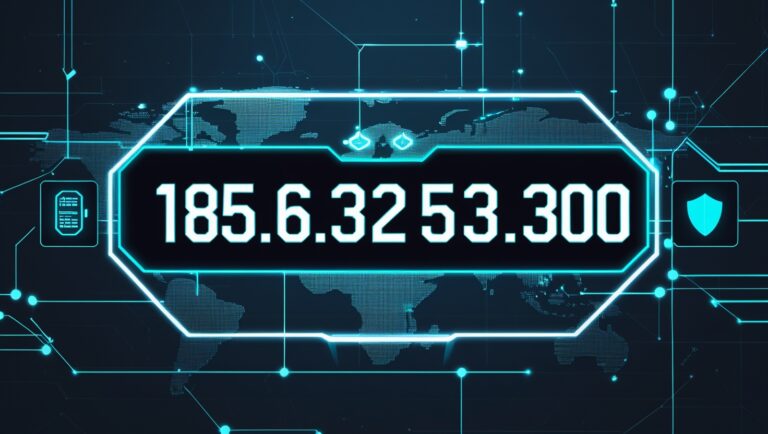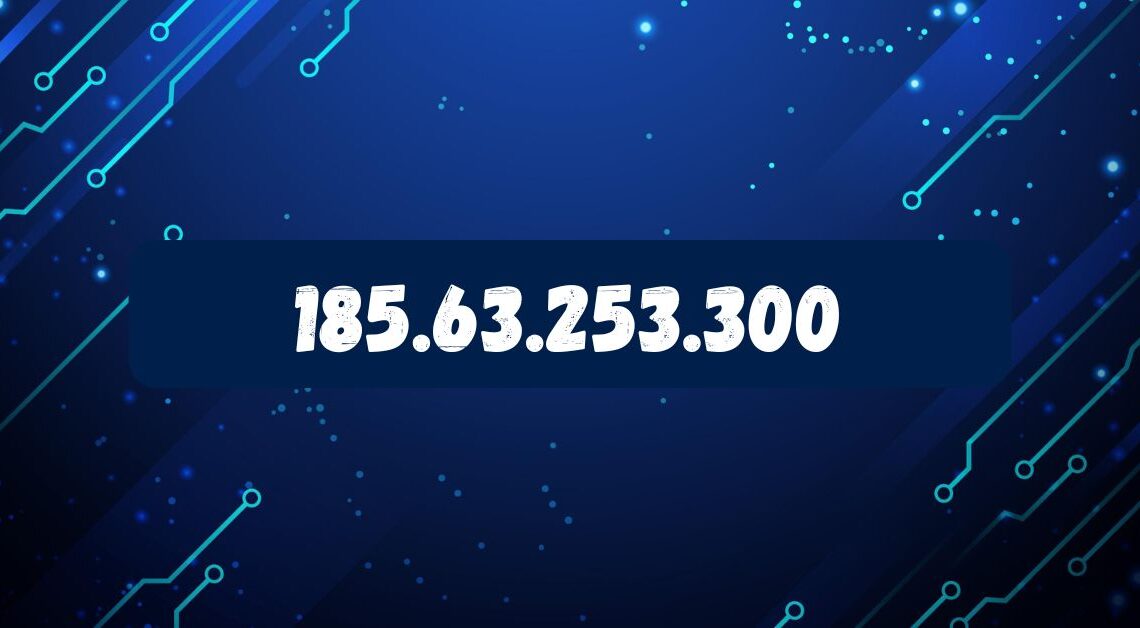Table of Contents
We have entered a digital world where every one of our devices is linked through networks. The base of connectivity has something significant: IP address. An IP address is not simply a random set of numbers; it is your address allowing you access to the online sphere. In this piece, we will discuss one specific IP address—185.63.253.300—and examine its relevance step by step.
This indicates that regardless of whether you are searching for information on how IP addresses function or need specific details on 185.63.253.300, you have arrived at the proper location! This piece will uncover every detail related to this IP address to optimize your internet usage. So, get a cup of coffee, sit back and let’s jump right in!
What is an IP address, and what is its purpose?

Devices connected to the Internet are globally recognized through their unique IP Address or Internet Protocol addresses. An IP Address is like a digital home address for devices connected to the Internet. A device requires an IP Address to receive data or send any form of communication. Therefore, an IP address acts as an essential tool when it comes to communicating with a device.
An IP address primarily serves two functions. One is to serve as identification for a host or a network interface. Secondly, it offers locational services that help pinpoint the region a network host is at. Using an IP Address, data is transferred effortlessly from different points.
IP addresses are divided into IPv4 and IPv6. The former is more commonly known as the “dotted quad format,” with four groups of numbers followed by periods. The latter consists of eight alphanumeric groups in bold space separated by colons. With the rapid devices connecting to the Internet, paying keen attention to the identifiers is becoming crucial in the Web connecting every device.
Overview of the IP 185.63.253.300
185.63.253.300, like other public IPv4 addresses, consists of four octets separated by a decimal. Each segment functions in digital technology, enabling devices to communicate with and identify one another.This IPv4 address must be connected to an ISP, given that it facilitates the identification of specific devices over the Internet. Proper packet-sequencing and inter-network communication depend on unique addressing schemes.
Locating a given IP address about its subnet can be a useful heuristic for estimating geographical location and ownership. Organizations increasingly utilize such addresses to manage remote services, demonstrating the broad applicability and strategic importance. Though not as widely known as other addresses, further investigation of 185.63.253.300 demonstrates how it serves the context in the ever-growing digital world.
How to check and locate an IP address
Finding and checking an IP address is easier. Start with online tools made particularly for it. WhatIsMyIP.com or IPinfo.io will provide your public IP address within seconds.Access the Command Prompt and type “ipconfig” if you use a Windows computer. Your local IP can be found under the Ethernet adapter’s section.Macs go to System Preferences, then Network. You pick your active connection, and all the details are there.
Mobile devices are not without options. For iOS or Android, go to Settings, click Wi-Fi, and then click on the connected Network to find the granted IP address.These techniques are helpful whether you are curious about your digital footprint or experiencing connectivity problems.
Common uses for the IP 185.63.253.300
The Internet Protocol Address 185.63.253.300 has several uses in cyberspace. Numerous companies use the IP address to make information available to the public conveniently.It is common knowledge that most companies use this availability for business purposes and to enhance their customers’ productivity.
Moreover, developers might have to use this IP address to debug an application or service. For some people, this geolocation is a gateway for geo-specific services that may be otherwise banned.People working in technology are likely to find using enabling them to simplify their work with cyber security and clearly for IP 185.63.253.300.
Advantages and disadvantages of using 185.63.253.300
Considering the IP address 185.63.253.300 comes with its benefits and drawbacks. This IP has the potential to guarantee outstanding smooth operational access to various online services, garnering user trust in the sites hosted on this server.There are also negatives worth mentioning. Security is one glaring concern; utilizing a relatively obscure or public IP poses a risk to the user due to possible exploitation and security risks.
Another potential drawback is that content access is limited based on legal frameworks governing the address. Also, using this IP might not be reliable in terms of usage because fluctuating traffic tied to the address might cause periodic downtime or lags during peak usage.Balancing these factors supports whether or not to leverage this specific IP address for internet connectivity.
Tips for optimizing your internet connection185.63.253.300
When using the IP 185.63.253.300, improve the internet connection by evaluating the router settings first. The router’s admin panel has different settings that could improve the performance.Consider refreshing firmware regularly to have the newest security aspects and add-ons available. Among many, this single adjustment can help improve speed and dependability tremendously.
Next, put your router in a central location in the home or office, which is unobstructed and clear of walls. Oftentimes, a centralized area provides more exhaustive coverage across your home or office.Shifting from Wi-Fi to wired connections whenever possible can also vastly increase speeds. Ethernet offers lower latency and greater stability for devices with higher bandwidth demands.
Monitoring devices connected to your Network regularly is a good practice as well. With most devices not in use being idle, active bandwidth can be freed. This is why optimization with 185.63.253.300 is easy; each little aspect seamlessly adds to the online experience.
Alternatives to using the IP 185.63.253.300
While looking for alternatives to the IP address 185.63.253.300, an option that comes to mind is static IP, which maintains your privacy.Virtual Private Network is another example that works impeccably when defending one’s privacy. VPNs conceal one’s original IP address and instead show the IP from the server over which browsing and internet activities are conducted. This works to the user’s advantage and defends their identity.
Another method that can also be considered as alternatives is the proxy server. This is defined as a substitute covering the user’s identity. They stand as a middleman, masking the individual’s location. Hence, it can be an impersonating device for the real user.
IPv4 can also aid people in achieving long-term aims. Replaced by IPv6, it serves as a better option with more address availability and growing capabilities.These DNS from ISPs worsen users’ browsing speeds compared to those set up by private providers such as Google and Cloudflare.
Conclusion of 185.63.253.300
Comprehending the specifics of an IP address, including, but not limited to, 185.63.253.300, is paramount for those interacting with the digital landscape today. It is a fundamental identification unit that enables efficient inter-device communications on networks.
Analyzing associated metadata further shows why this address is significant for hosting services and online multiplayer games. Its applications are broad and, when properly configured, can significantly improve one’s internet performance.
But, as is often the case, benefits do not come without costs. Users should be aware of the inherent security vulnerabilities that some IP addresses, such as 185.63.253.300, entail and make the necessary adaptations to enhance their cyber hygiene.Improving the global optimization of the IP suggests more efficiency improvements that can be passed when considering structure and positioning with the greater system and shifts elsewhere for performance or cloak-and-dagger work.
Keeping track of one’s virtual footprint and reducing risks in online activities is critical. With rapid technological progression, understanding the purpose behind the numbers will greatly aid an individual in staying ahead of security threats or concerns.
